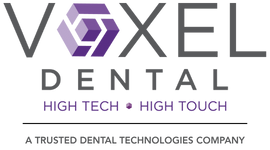Benefits of CAD/CAM Technology in Dental Restorations
In dentistry, CAD/CAM technology is a game-changer, transforming how dental restorations are done. It brings a host of benefits, starting with an unparalleled boost in precision, accuracy, and efficiency. Making dental prostheses has become a precise and simplified process, ensuring they are strong and look good, meeting patients' needs and expectations. Let's delve into how this groundbreaking technology is shaping the future of dental restorations and how it can improve your dental practice.
What Is CAD/CAM Technology in Dentistry?
CAD/CAM dentistry is a cutting-edge technology that has transformed the dental field since its adoption in 1985. This new approach, inspired by the CAD and CAM tools used in manufacturing, allows dental professionals to create precise restorations like crowns, veneers, and dentures quickly and accurately. By using CAD/CAM software, dental practices and labs can make the restoration process more efficient, benefiting both dentists and patients. This digital dentistry method has transformed how dental professionals create prostheses, becoming a crucial tool in modern dental care.
How Does CAD/CAM Work?
CAD/CAM technology, short for computer-assisted design (CAD) and computer-aided manufacturing (CAM), simplifies dental procedures such as placing dental implants, crowns, and bridges in just one appointment. Here's how it works:
- Tooth Preparation: It all starts with getting your mouth ready for the procedure, which might mean adjusting adjacent teeth for a dental bridge or prepping a tooth for a crown.
- Digital Dental Impressions: We use a small intraoral scanner to make 3D models of your teeth and gums, replacing the old, uncomfortable impression putty. These digital impressions offer high accuracy, enabling the dentist to identify any potential challenges and ensure a smooth procedure.
- Design: The digital impressions are transferred to a computer, where the dentist designs your restoration in real-time. Once the design is complete, it's sent to the in-office milling machine.
- Milling: In the past, patients had to wait weeks for a lab to manufacture their dental restoration. However, with CAD/CAM technology, your crown or bridge can be created during a single appointment. This technology also lets us custom-mill posts and abutments for dental implants so you can walk out of the office with your new smile.
- Restoration Placement: The final step involves securing the restoration in your mouth. The specific procedure varies depending on the treatment, and in cases like same-day dental implants, IV sedation may be recommended to make the appointment more comfortable and less time-consuming.
CAD/CAM technology not only streamlines dental procedures but also enhances patient comfort and efficiency, ultimately leading to a positive dental experience. So dentists can take the time to explain treatment options, ensuring informed decisions about your oral health.
Advantages of CAD/CAM Dental
CAD/CAM: Enhancing Precision and Quality
CAD/CAM technology is a game-changer in the realm of dental restorations, primarily due to its remarkable precision and accuracy. It empowers dental professionals to create intricately detailed designs, resulting in restorations that fit perfectly and function optimally. The digital workflow provides precise measurements, access to virtual tooth libraries, and advanced occlusion analysis, all of which combine to ensure the utmost accuracy in the creation of dental restorations. This level of precision offered by CAD/CAM technology sets a new standard for excellence in dental care.
CAD/CAM Technology Saves Time and Cost Efficiency
CAD/CAM technology offers significant time and cost efficiencies in the dental field, benefiting both dental specialists and patients. By digitizing traditional processes and eliminating the need for materials like alginate it reduces material and shipping expenses, ultimately lowering treatment costs.
Moreover, the streamlined design and production process, thanks to dental software, results in shorter treatment durations and fewer visits, which further reduces costs. Clinics can now make restorations on-site in a single day, allowing for complex treatments to be finished in just one visit. The return on investment for dental software and hardware can be seen in a few months, making it a smart choice for dental practitioners at Voxel Dental.
CAD/CAM: Customization and Patient Satisfaction
CAD/CAM technology brings a new level of customization and patient satisfaction to dental care. With its extensive customization options, dental professionals can achieve perfect aesthetics in restorations, including natural tooth color matching, texture replication, and personalized design modifications. This ensures that the final restoration seamlessly blends with the patient's natural teeth, resulting in a beautiful, natural-looking smile.
Furthermore, CAD/CAM technology enhances the overall patient experience. By cutting down on the number of dental visits for restorations, patients spend less time in the dental chair, reducing discomfort and anxiety. Gone are the days of messy and uncomfortable impression, materials, replaced by accurate and patient-friendly digital scans. Patients appreciate the convenience and efficiency that CAD/CAM technology brings, leading to higher satisfaction levels and happier smiles.
The Future of Dental Restorations with CAD/CAM
The future of dental restorations is promising and ever-evolving. The inclusion of AI and "smart automation" in CAD/CAM software platforms is changing the game for dental labs. Efficiency and profitability take center stage as the need for highly skilled operators diminishes, file preparation and manufacturing time is minimized, and the value of 3D printers and CNC mills is maximized. The future of dental restorations with CAD/CAM technology is one where precision, efficiency, and patient satisfaction take the lead in dental care.
